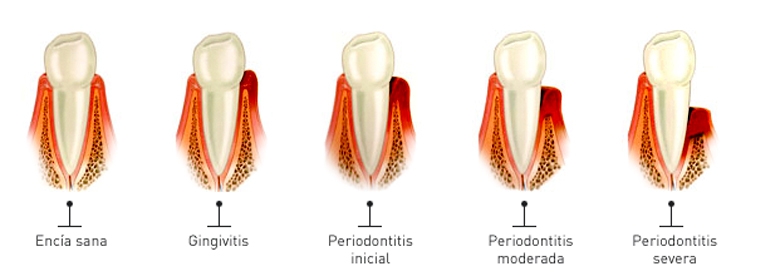What are periodontal diseases?
They are a group of diseases that affect the tissues (periodontium) that surround and attach the teeth to the jaws. They are diseases of inflammatory nature and derived from infections (caused by bacteria). Depending on their severity we call them either gingivitis, when it only affects to the superficial periodontium (gum) or periodontitis when the bone and the ligament that hold the teeth is destroyed.

Periodontal disease:
Symptoms that should alert us are any of these:
In Spain, the edentulism, which it is as known to the absence of teeth, either total or...
If you are pregnant, do not forget to tell us so we can advise you and take care of your oral...


